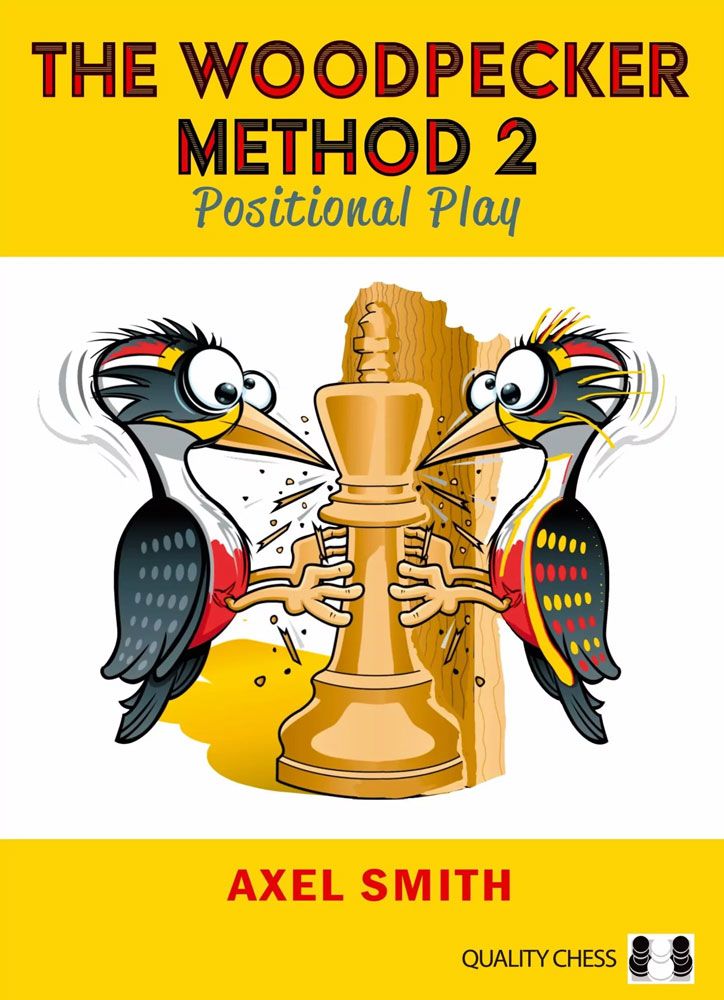Chess players often focus on tactical training to sharpen their skills, but true mastery requires a deep understanding of positional play. While the original Woodpecker Method revolutionized tactical training with its focus on pattern recognition through spaced repetition, The Woodpecker Method 2 takes a different approach. This new release shifts the focus from tactics to positional chess, offering a fresh and essential training tool for players looking to improve.

The Woodpecker Method 2
Author: Axel Smith
Read Sample | Buy
The first Woodpecker Method, by GM Axel Smith and GM Hans Tikkanen, became a sensation among chess readers. By advocating the principle of spaced repetition and focusing on patterns, the method helped players (even the authors themselves!) improve their tactical vision. The idea was simple yet effective: by repeatedly solving the same set of tactical puzzles over a set period, the brain starts recognizing patterns more intuitively, leading to faster and more accurate decision-making during games.
This is what the method is; you take a selection of puzzles, solve them over a certain period (4 weeks), take a short break, and then solve the exact same set in a shorter period (2 weeks). You repeat the same process until you are able to solve all the puzzles from the set in a single day.
The Woodpecker Method 2, uses the same approach but takes it a step further by addressing an often underemphasized aspect of chess training: positional play. Recognizing that a strong tactical foundation must be complemented by strategic plans and positional understanding, this sequel introduces a methodical approach to understanding and mastering the subtleties of positional chess.
Unlike its predecessor, this book is filled with over 1,200 positional exercises, drawing from a rich variety of historical and modern games. These puzzles challenge players to find the best strategic plan or maneuver rather than immediate tactical shots. The first part of the book deals with pawn structures and positional motifs related to them, and the second section deals with positional rules of thumb.
Let’s take a look at some examples from the book:
- White to play
Solution: g4 White launches a pawn storm, taking space on the kingside. There is no clear win, but Black’s king is in danger and White is in the driver’s seat
4. White to play, how would you recapture on d3?
Solution: 12.cxd3!
This improves White’s structure since:
a) It controls the c4- and e4-squares (the main point)
b) White can use the open c-file
c) Black can’t use his queenside pawns to open files not relevant in this game)
d) The pawn can advance to d4
e) It closes the a6-f1-diagonal.
298. White to play. There is no magical combination here, instead you need to think about what Black’s plan is, and simply stop that.
Solution: 9.Qf3 stopping Black from activating the usually bad light-squared French bishop
546. Black to play. White seems more comfortable in this position, with a strong central knight and more space. How should black proceed?
Solution: 11…c5! Black needs to undermine White’s center
Whether you’ve already benefited from the tactical training of the original Woodpecker Method or you’re new to the series, The Woodpecker Method 2 is an invaluable addition to any serious chess player’s library.
Explore The Woodpecker Method 2 on Forward Chess today!

The Woodpecker Method 2
Author: Axel Smith
Read Sample | Buy
- The Power of Pattern Recognition: The Woodpecker Method 2 - August 20, 2024
- Rock Solid Chess: Volume 2 - February 21, 2024
- Unsung Heroes of Chess - February 19, 2024
